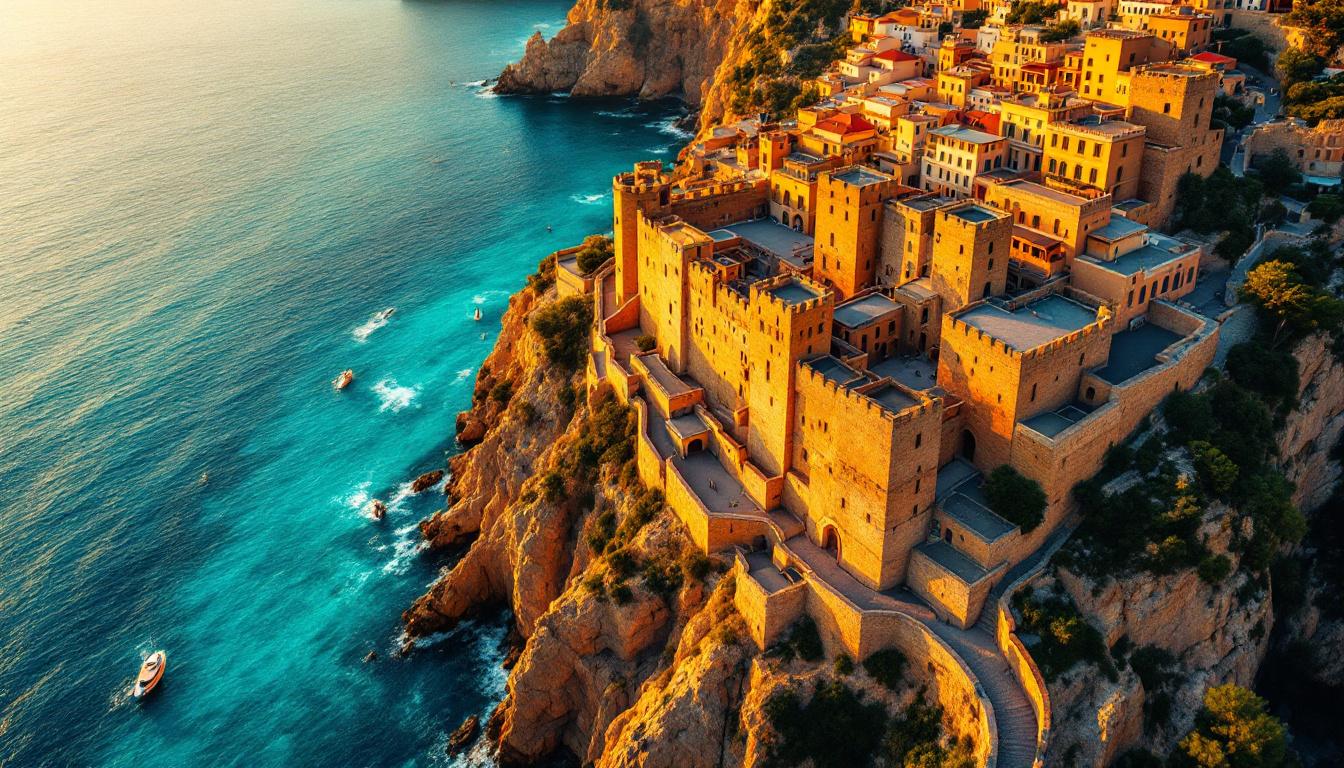Nestled between rugged cliffs and crystalline Mediterranean waters, Tossa de Mar stands as Costa Brava’s medieval jewel. This enchanting Spanish coastal town boasts the only surviving fortified medieval settlement on Catalonia’s coastline, where 12th-century walls still embrace narrow cobblestone streets and amber-hued stone buildings.
The fortress where time stands still
Vila Vella, Tossa’s walled old town, transports visitors eight centuries back in time. Seven magnificent towers punctuate the ancient walls, offering breathtaking panoramic views of the coastline. As local historian Maria Casals explains, “These walls weren’t just for protection; they tell stories of pirates, commerce, and a community that has survived since Roman times.”
Unlike many preserved medieval villages in Europe, Tossa’s fortress remains remarkably intact, giving visitors an authentic glimpse into medieval coastal life rather than a reconstructed experience.
The beach where Hollywood fell in love
In 1951, Ava Gardner arrived to film “Pandora and the Flying Dutchman” and famously called Tossa “paradise.” The love affair between Hollywood and this fishing village led to an unlikely statue of Gardner overlooking Platja Gran, the town’s main beach where golden sand meets startlingly blue waters.
“Before Ava, we were just fishermen,” remarks José Martínez, whose grandfather appears in background scenes of the film. “After her, we became known worldwide. But we’ve managed to preserve our soul despite the fame.”
Three beaches, three different worlds
Tossa offers a trio of distinct beaches: bustling Platja Gran beneath the fortress walls; intimate La Codolar, a pebble beach nestled against ancient stones; and tranquil Mar Menuda with its crystal waters perfect for snorkeling. Unlike Spain’s overcrowded coastal hotspots, even in summer you can find space to breathe here.
The coastal path that reveals hidden coves
The Camí de Ronda coastal trail winds along dramatic cliffs punctuated by hidden coves accessible only by foot or boat. These secluded gems like Cala Pola and Cala Giverola offer pristine swimming spots framed by pine forests. Walking these ancient paths provides the same views that have captivated visitors for centuries.
A culinary tradition preserved by passionate locals
While some hidden Spanish villages are known for olive groves, Tossa’s culinary identity centers on seafood. The signature dish, “Cim i Tomba,” originally prepared by fishermen at sea, combines potatoes, garlic, fish, and olive oil in a hearty stew that embodies Catalan coastal cuisine.
The museum inside a medieval fortress
The Municipal Museum, housed within the fortress walls, showcases an unexpected modern art collection. When civil war erupted across Spain in 1936, several prominent European artists sought refuge in Tossa, including Marc Chagall, who dubbed it “the blue paradise.” Their works now form a surprising collection within these ancient walls.
Where to stay: Ancient stones meet modern comfort
For an authentic experience, boutique hotels like Casa Granados offer rooms within converted fishermen’s cottages. For more luxury, the Hotel Diana provides elegant accommodations with spectacular views of the medieval fortress illuminated at night – a sight that rivals Italy’s most picturesque hill towns.
When to visit: The secret seasons
While summer brings Mediterranean warmth, visit in May or September to experience Tossa like a local. The crowds thin, temperatures remain pleasant, and the crystalline waters still invite swimming. Fall brings a golden light that photographers treasure, casting the medieval stones in an amber glow against deep blue skies.
Tossa de Mar represents what many Mediterranean destinations have lost – authentic charm preserved despite tourism. Like certain medieval French villages that have remained untouched by mass tourism, Tossa maintains its soul through careful preservation and a community determined to share their heritage rather than sacrifice it.
As you stand atop the ancient walls watching fishing boats return at sunset, with local wine in hand and the Mediterranean stretching endlessly before you, you’ll understand why artists, writers, and travelers have been falling in love with this Catalan jewel for centuries. Tossa doesn’t just preserve history – it lets you live within it.
